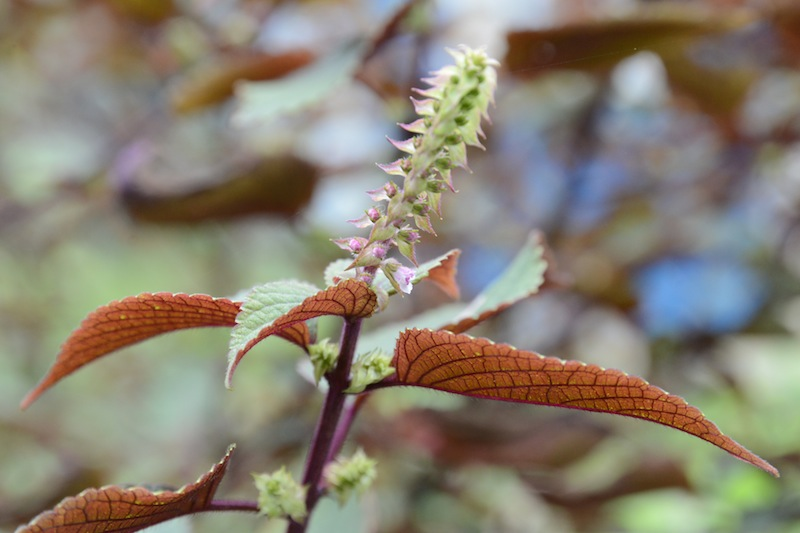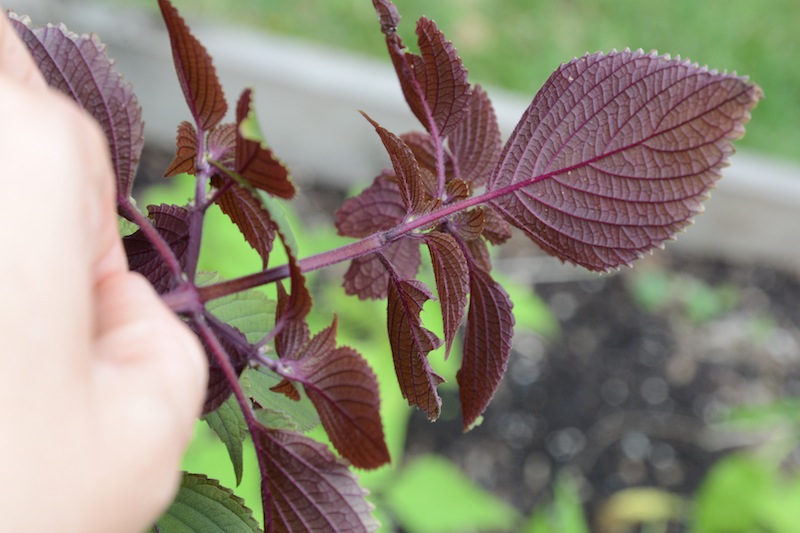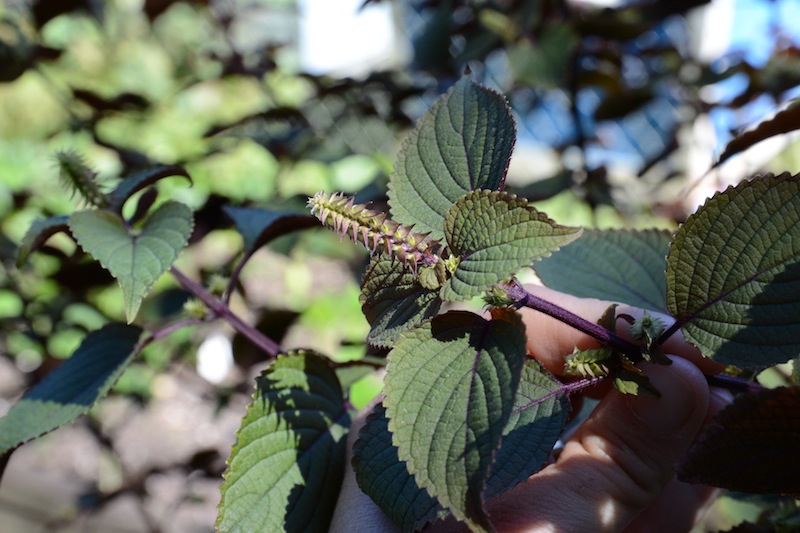Sowing Successful Shiso! 7 Tips
So, what about sowing and growing shiso? I think it is a great idea. You should definitely put it on your list of things to grow. Perfect for home, community, and school gardens, window sills, and flower pots, shiso is a colorful way to green up your thumbs! Sow in early spring, plant in late spring, and then in summer and fall harvest away! Easy, colorful, fragrant, tasty, and unique. That’s shiso!
Shiso, pronounced she-so, has many common names including perilla, Japanese basil, 紫蘇 in Japanese, and in botanical circles Perilla frutescens var. crispa.This plant is a super fun addition to late summer gardens and as easy to grow as it is tasty and colorful. I have a ton to harvest right now and there is no way that I could ever use the amount growing in my garden, so it’s time to get creative. But first, what is shiso, really?
Shiso is a culinary herb mainly used in Asian cooking. This makes it a great plant to grow in school gardens when you are studying Asia. The entire plant is edible, though most often it is the leaves, flowers, seed pods, and seeds that are eaten. It is very nutritious and the leaves are high in calcium and iron. The red variety is even used to color other foods like the pink pickled ginger you get at the sushi restaurant.

Do you see me hiding back there? This shiso is so big!
I planted one small plant last year and this year I unexpectedly grew a shiso jungle! It reseeded itself generously for me, so be sure to plant it in an area where you don’t mind a shiso jungle of your own. It is in the mint family after all, so you can expect a bit of a take over. Plant shiso in a pot if you want to control its growth or if you want to grow it now. Who says you have to wait to do it outdoors! Plant a sunny pot of shiso today!
7 tips to set you up for shiso success:
1. Soak your shiso seeds overnight. This gives them a germination jumpstart. 2. Plant more seeds than you need. Not all your shiso (or any other) seeds will sprout, so plant more than you need and if you have extras you can eat the sprouts you thin. 3. Shiso can be a slow germinator and sprouter so give it up to 3-4 weeks to get going and keep the soil wet during that time. Don’t let those seeds dry out! 4. Shiso plants do well in full sun, but can also take some shade. Be sure you plant your shiso in a space that gets 4-6 hours of sun. At home mine grows in a space that gets full morning sun and afternoon shade; at one of my community children’s gardens it grows in blazing full sun all day.

See the teeny little purple flowers coming out of the bud. These will make the seed pods.
5. Keep it watered regularly. Shiso isn’t a huge water hog or anything, but few garden plants like to dry out. Shiso will wilt when it gets dry, but once watered it will perk right back up.
6. Use the shiso sprigs in flower arrangements. I always grow the red variety because it tastes good and looks great in any vase of garden herbs and flowers. When they are in bloom it’s an added bonus!
7. For fun, try using the Japanese words when working with shiso especially if you are working with children. You can have them write the name and the japanese characters on the plant ID tags!
Red shiso – 赤じそ akajiso, green shiso – 青しそ ao-jiso or ohba 大葉 , yakumi – extra seasoning.
In what recipe will you try a little shiso?
Pesto perhaps?
Share your shiso ideas in the comments below!
Share your shiso sowing success on Instagram #wingswormsandwonder
Seeds to Sprout:
Have access to shiso and feel like cooking? Try one of these 43 recipes using shiso. Cooking with kids? Make plain rice, add red shiso leaves to turn it pink, and let the children sprinkle the seeds out of the flower buds on top!
Plan to order some shiso seeds to grow in your upcoming spring and summer gardens. It’s never to early to start planning!
Tips for seed soaking
Thanks Just Hungry for the Japanese writing and words!




